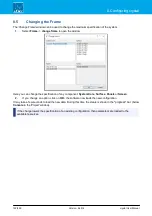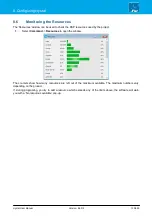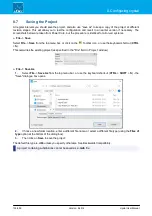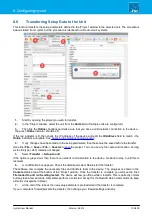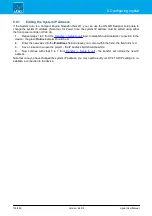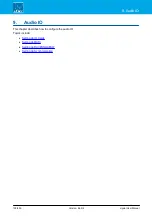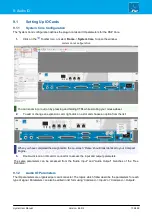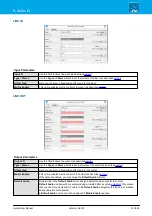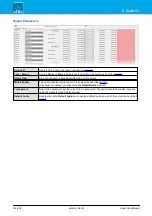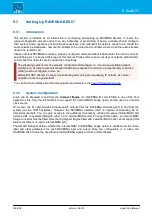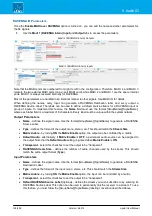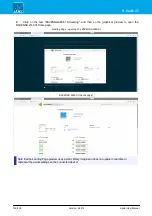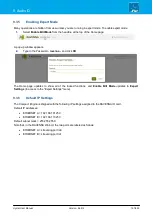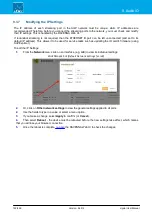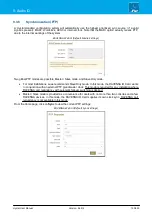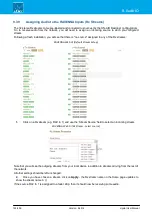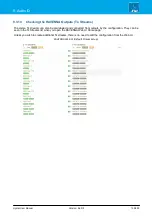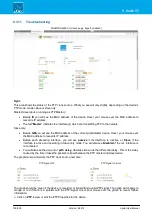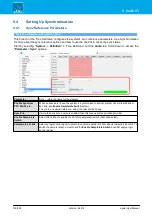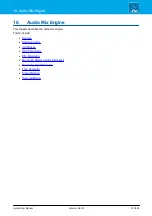
crystal User Manual
Version: 6.6.0/2
146/459
9. Audio IO
9.3
Setting Up RAVENNA/AES67
9.3.1
Introduction
This section is intended as an introduction to configuring and setting up RAVENNA streams. It covers the
typical configuration process and is in no way exhaustive or prescribing of how a customer should configure
their system. Some questions one should ask oneself are: how redundant the network needs to be; should the
audio network be standalone; how are the streams to be routed and controlled; where do all the audio streams
need to be routed to; etc.
Please note that RAVENNA requires a properly configured external network infrastructure to function correctly
and defining such is beyond the scope of this manual. Please refer to and consult your network administrator
and architect for network specific questions and settings.
The streaming network
must
be properly configured and managed. i.e. it must use a suitable network
architecture; all components must support multicast (as opposed to unicast); a proper Quality of Service
(QoS) must be configured; and so on.
Please
DO NOT
attempt to connect the streaming ports using an unqualifying IP network, as correct
operation cannot be guaranteed.
You can find more details about the data network requirements in the
9.3.2
System Configuration
Audio can be streamed to and from the
Compact Engine
if a RAVENNA IO card is fitted to one of the front
expansion slots. Only the left-hand slot can support the internal MADI bridge option and be used as a master
clock source.
On its own, the IO card provides 8 inputs and 8 outputs from the RAVENNA streaming port to and from the
system (via the TDM backplane). However, the RAVENNA interface itself is capable of streaming 64 bi-
directional channels. You can gain access to the additional channels by utilising the spare internal MADI port
(which exists on systems fitted with either 0 or 2 external MADI ports). To support this option, an internal MADI
bridge connector must be fitted. Note that a Compact Engine fitted with 4 external MADI ports cannot support this
feature (as there is no spare internal MADI port).
The ON-AIR Designer defines whether the internal MADI to RAVENNA bridge option is enabled and the name,
label and other parameters for each RAVENNA input and output. Once the configuration is in place, the
RAVENNA Web UI must be used to map the RAVENNA signals to the Tx and Rx streams.

